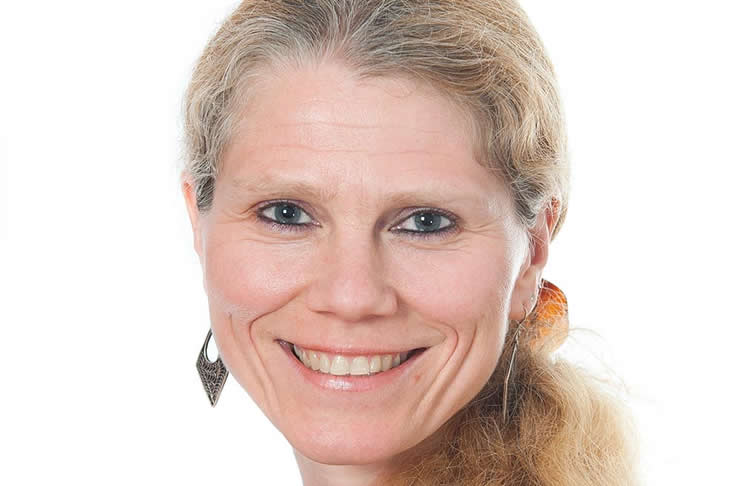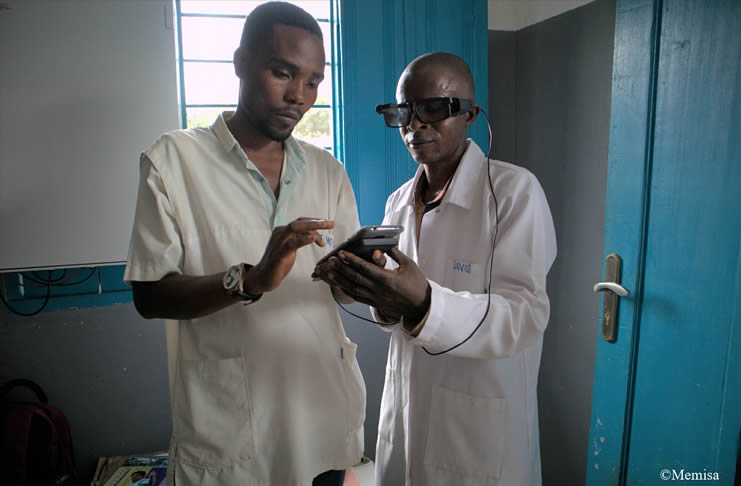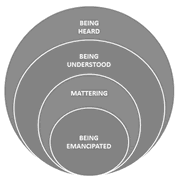 Being heard, being understood, mattering and being emancipated. These are four fundamental human needs. Discover what they mean for people-centric marketing.
Being heard, being understood, mattering and being emancipated. These are four fundamental human needs. Discover what they mean for people-centric marketing.
I mentioned all four of them in our “content sharing and storytelling” guide and that’s not a coiincidence. In fact, three of them refer to Trey Pennington, a speaker at our very first event (read the interview by my friend Giedrius Ivanauskas) and… a great storyteller. Trey is no longer among us since September 2011 and each year I think back about some of the things he shared and how he strongly emphasized the human dimension and aspects of marketing and business.
Marketing 3.0
He had a values-based (as in human values), need-centric and emotion-driven approach, making him, in fact, a forerunner in what is now known as Marketing 3.0, since it was called like that by Philip Kotler. This post is written in memory of Trey and working further on the ideas he shared with us, so many years ago, and builds further on his “three-fold human hunger”. I think he would have liked it. And I know it will make you think about your business, customers and more.
Trey brought the importance of human values, that strongly depend on the personal and social moral ecosystem of someone (education, culture, religious backgrounds, you name it) in a narrative and actually quite simple way.
A three-fold human hunger
However, I have come to realize that behind this apparent simplicity, there is much more. Trey said the incredible growth of social media is fuelled by a “three-fold human hunger”.
1) Everyone wants to be heard.
2) Everyone wants to be understood.
3) Everyone wants his or her life to count.
Yes, you can argue that it’s not science, that it looks a bit like Maslow or other views on human needs, but that doesn’t really matter. There are as many needs as there are people and probably more. However, the three dimensions of that human hunger actually are important to understand for businesses and marketers. I took the liberty of rephrasing them and adding a fourth one to work further on Trey’s ideas.
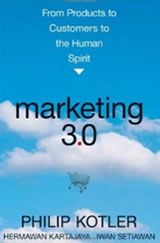
Listening as a continuous investment
So, here they are again, with a small addition:
1) People want to be heard.
2) People want to be understood.
3) People want to matter.
4) People want to emancipate themselves.
Aren’t much of these four one and the same? Absolutely not. In fact, the desire to be heard is a prerequisite for the others. It is, in addition to more pragmatic reasons, one of the many reasons why marketers and businesses really need to listen to people. If you don’t listen, far beyond social, and thus – by definition – also ask, you cannot understand. If you cannot understand, you cannot take business decisions.
Four tips to hear people:
- Ask people what they want/need throughout all marketing & business functions.
- Set up cross-channel listening systems and processes.
- Integrate processes and applications to aggregate what you hear.
- Adopt a continuous listening and asking approach.
People-centric marketing: the gap between listening and understanding
There is a world of difference between being heard and being understood. Listening to someone does not necessarily mean that you understand and know what they really, really want or need.
The reasons are simple. First of all, we listen from our perspective, rarely from that of those we think we listen to. This lack of empathy and ability to understand is, for instance, one of the many reasons why so many businesses fail in achieving conversion: because they put themselves in the shoes of the consumer, and that’s wrong.
The people that visit your site or express an opinion are different than you. You need to go beyond what you hear and really understand the meaning of the words and actions. You need to read between the lines and ask more questions to be sure. This is also what analytics is all about. Furthermore, as a matter of fact, it wouldn’t hurt you in real life as well.
A second reason why listening and understanding are not the same is, obviously, the fact that human beings are different and interact or express themselves differently.
Four tips to understand people:
- Avoid biased interpretation and analyzing behavior from your personal perspective or business perspective.
- Ask further questions and listen more to be able to analyze meaning and purpose.
- Define values-based metrics.
- Get customer advocates on board (such as a Chief Customer Officer) and involve people, from outside your company, in your analytic processes.
Do your customers matter?
If you understand you can make a difference. And here the third element of the “human hunger” is key: the desire to matter.
This is where listening and understanding become an act in which you involve people and provide them a sense of belonging and really being part of your organization or whatever other communities. Without this element, there is no community, engagement or advocacy.
For most businesses, listening is already very though (because it is for human beings?). For even more organizations, understanding in a RELEVANT way is extremely difficult. The actual involvement and engagement, however, is very scarce and truly an exception.
Four tips to make people matter:
- Use the insights from listening and understanding to act.
- Involve people in the evolution of your business, brand, etc.
- Show appreciation via several activities.
- Don’t say people matter: prove and measure it.
Emancipation: do you trust your customers?
Now, why did I add a fourth element? Why the emancipation? It has something to do with Trey himself, but it’s more than that. Anyone, with some psychologic background, will know the life of every human being starts with a total relationship that encompasses everything and is basically a very dependent relationship that, in fact, never really goes away (the degree in which it does, depends on numerous factors). I am talking about the relationship with the “feeding mother.” Gradually, if all is well, children learn to become more independent, step by step. During their first steps, they still seek a safe presence, but they learn to take care of themselves because they want to. At the same time, and, again, this is basic psychology, they continue to long for the sense of security they have known as a child, looking for it elsewhere. The newborn child also has a very special position: it is in most cases the centre of attention. This makes it even harder to let go of the later “internalized” maternal relationship.
The human condition is often a struggle between the desire to become free and independent (emancipation) and the fear to do so. That desire to emancipate ourselves, however, is real and always there, even if not always visible.
Does this still have anything to do with business and marketing? It sure does. Because, in the end, the increasing control people want to have over the way they buy, inform themselves and interact, is a sign of that desire for independence. A business that enables its customers to belong, trusts them, allows them to freely express themselves and enables them to realize their full potential, even if it’s just in a small way, wins. And so does a society, a tribe, a community and whatever else.
It is, in fact, offering people the choice in the difficult area where the battle between our need to be independent and our desire to be dependent takes place. Choice matters, as does time and trust, both for people and for your business.
Four tips to create the conditions for emancipation:
- Enable them to fulfil a task or achieve a purpose.
- Offer choice and control.
- Cherish initiative and input, reward expression: trust your customers.
- Make people gain time by not wasting theirs and optimizing efficiency from a people-centric perspective. Time is an invaluable human condition, as is freedom.
Below you find a small graphic, resuming the four needs and the tips. You can apply this to social media marketing, customer-centricity, conversion and all forms of communications.
I hope this way I have contributed to Trey Pennington his views on people-centric marketing and helped them to live on.
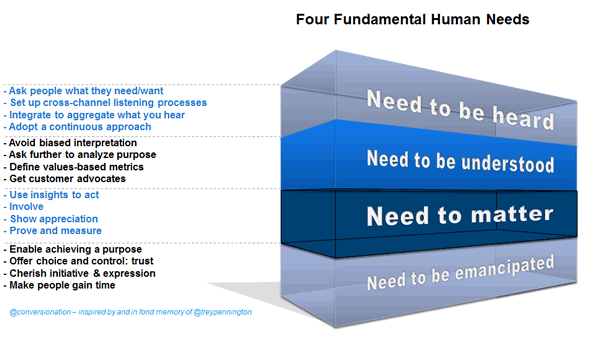
Also read: Feeding what humans hunger for with social media by Jim Ducharme.



